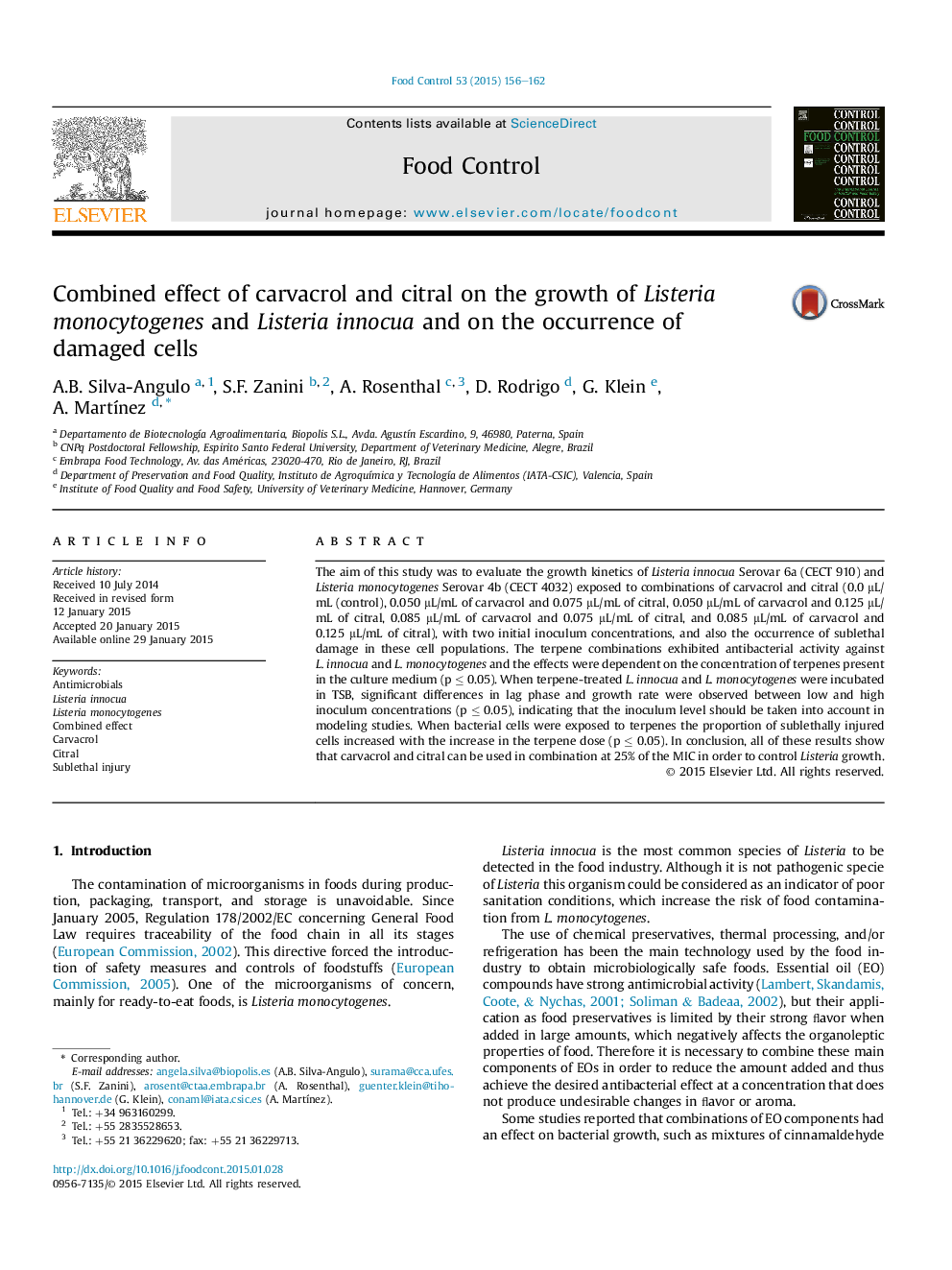| Article ID | Journal | Published Year | Pages | File Type |
|---|---|---|---|---|
| 6390781 | Food Control | 2015 | 7 Pages |
Abstract
The aim of this study was to evaluate the growth kinetics of Listeria innocua Serovar 6a (CECT 910) and Listeria monocytogenes Serovar 4b (CECT 4032) exposed to combinations of carvacrol and citral (0.0 μL/mL (control), 0.050 μL/mL of carvacrol and 0.075 μL/mL of citral, 0.050 μL/mL of carvacrol and 0.125 μL/mL of citral, 0.085 μL/mL of carvacrol and 0.075 μL/mL of citral, and 0.085 μL/mL of carvacrol and 0.125 μL/mL of citral), with two initial inoculum concentrations, and also the occurrence of sublethal damage in these cell populations. The terpene combinations exhibited antibacterial activity against L. innocua and L. monocytogenes and the effects were dependent on the concentration of terpenes present in the culture medium (p â¤Â 0.05). When terpene-treated L. innocua and L. monocytogenes were incubated in TSB, significant differences in lag phase and growth rate were observed between low and high inoculum concentrations (p â¤Â 0.05), indicating that the inoculum level should be taken into account in modeling studies. When bacterial cells were exposed to terpenes the proportion of sublethally injured cells increased with the increase in the terpene dose (p â¤Â 0.05). In conclusion, all of these results show that carvacrol and citral can be used in combination at 25% of the MIC in order to control Listeria growth.
Keywords
Related Topics
Life Sciences
Agricultural and Biological Sciences
Food Science
Authors
A.B. Silva-Angulo, S.F. Zanini, A. Rosenthal, D. Rodrigo, G. Klein, A. MartÃnez,
